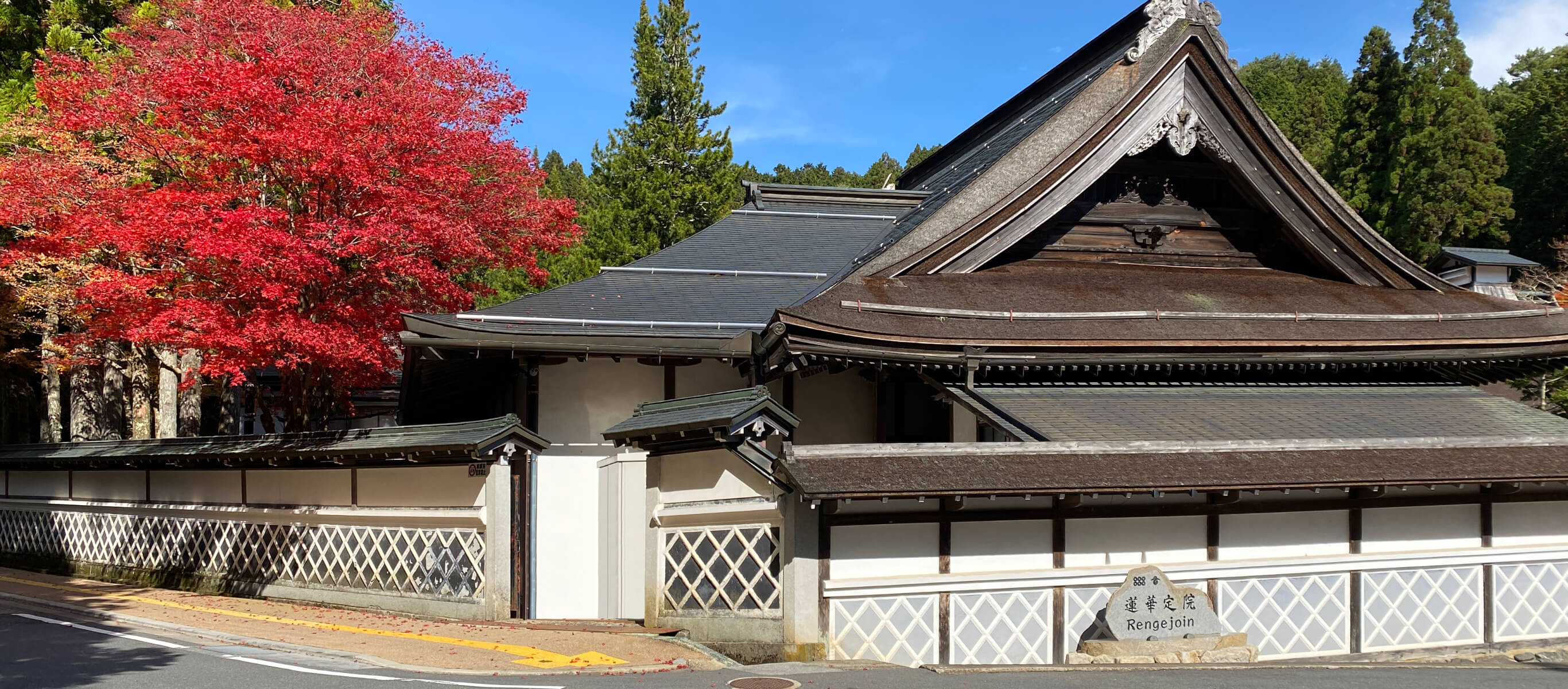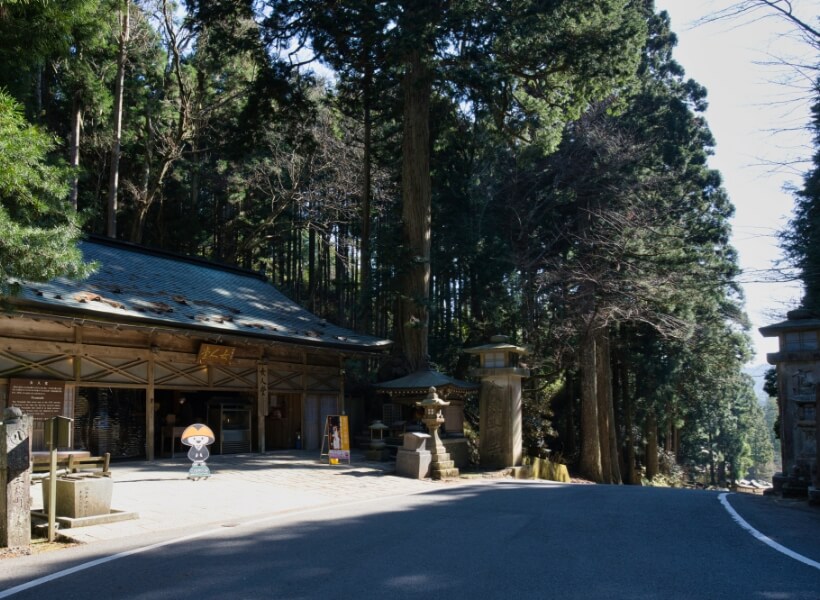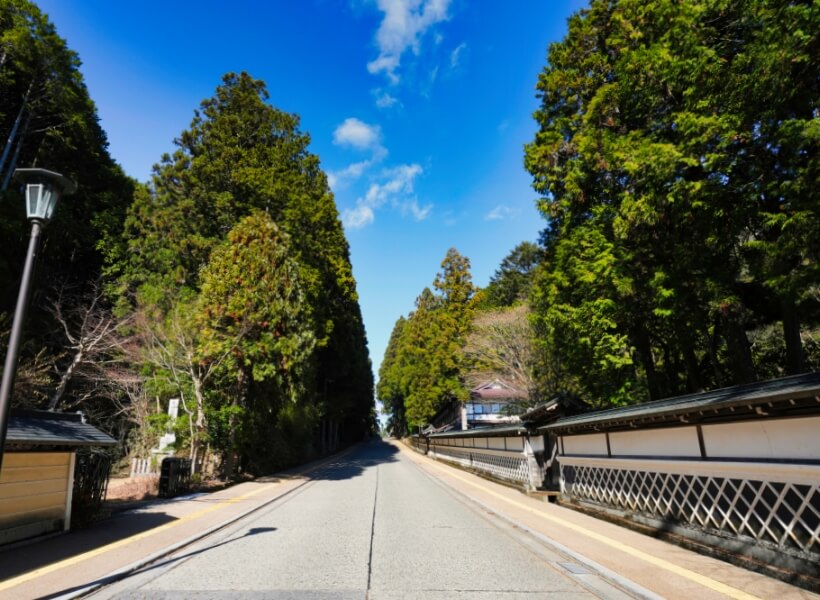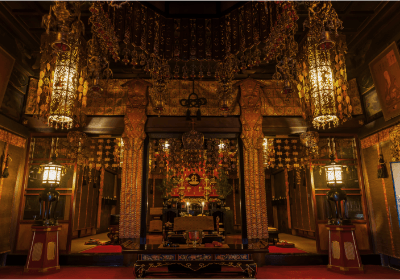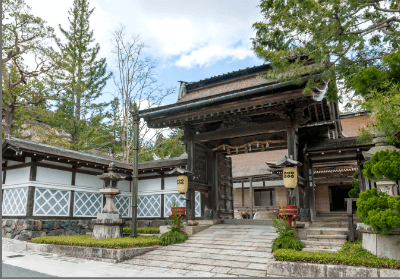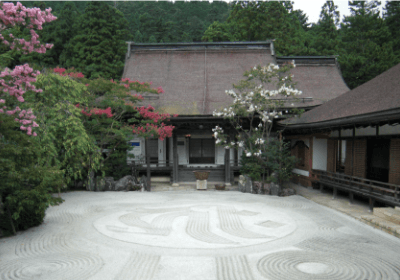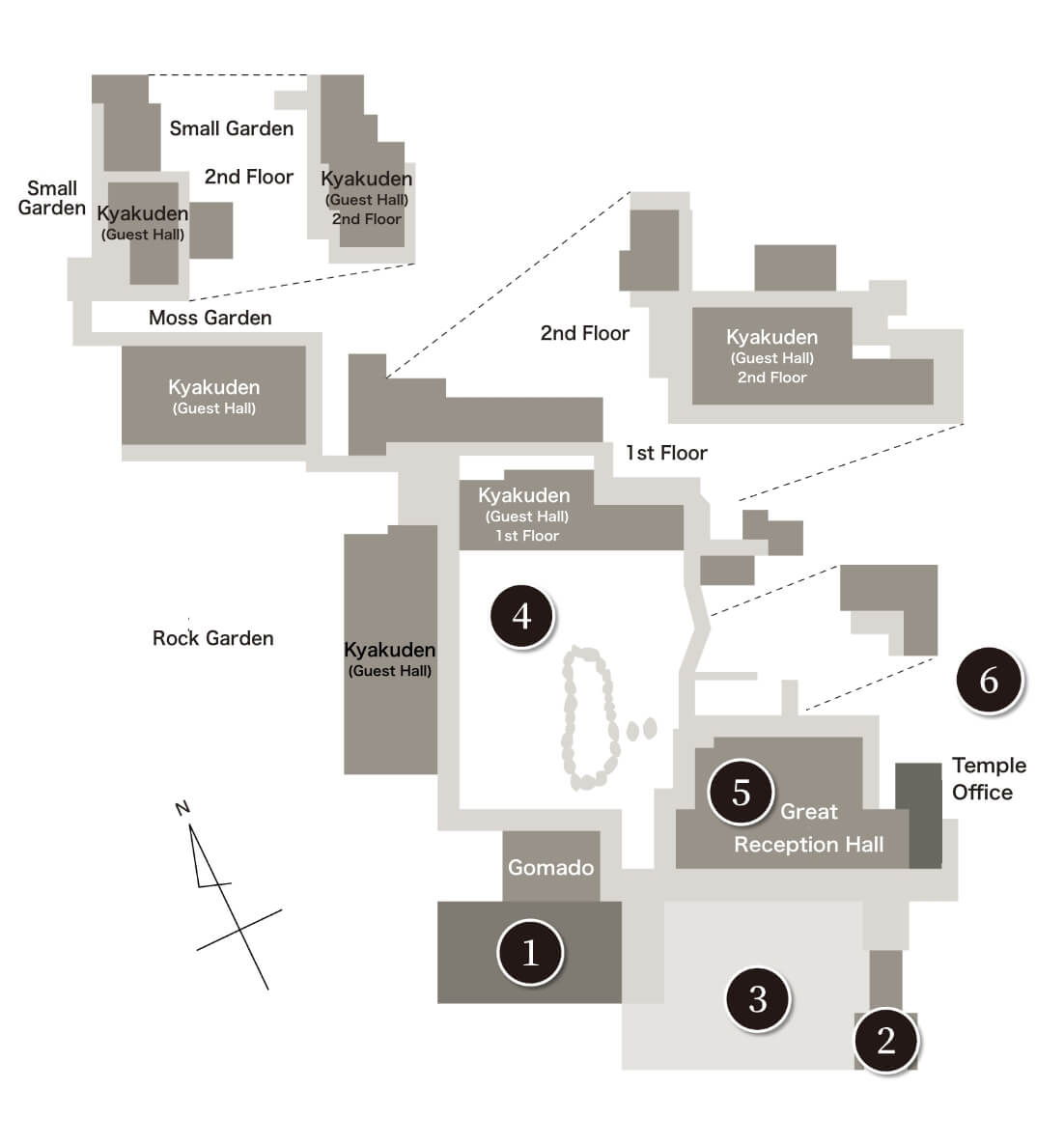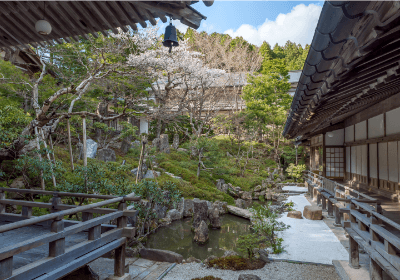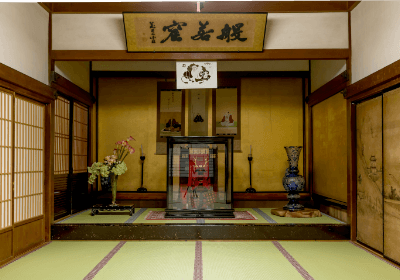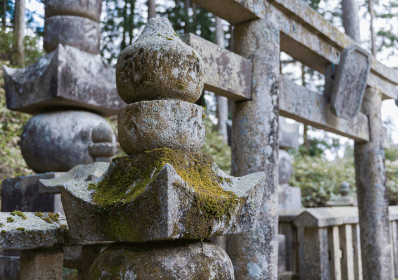
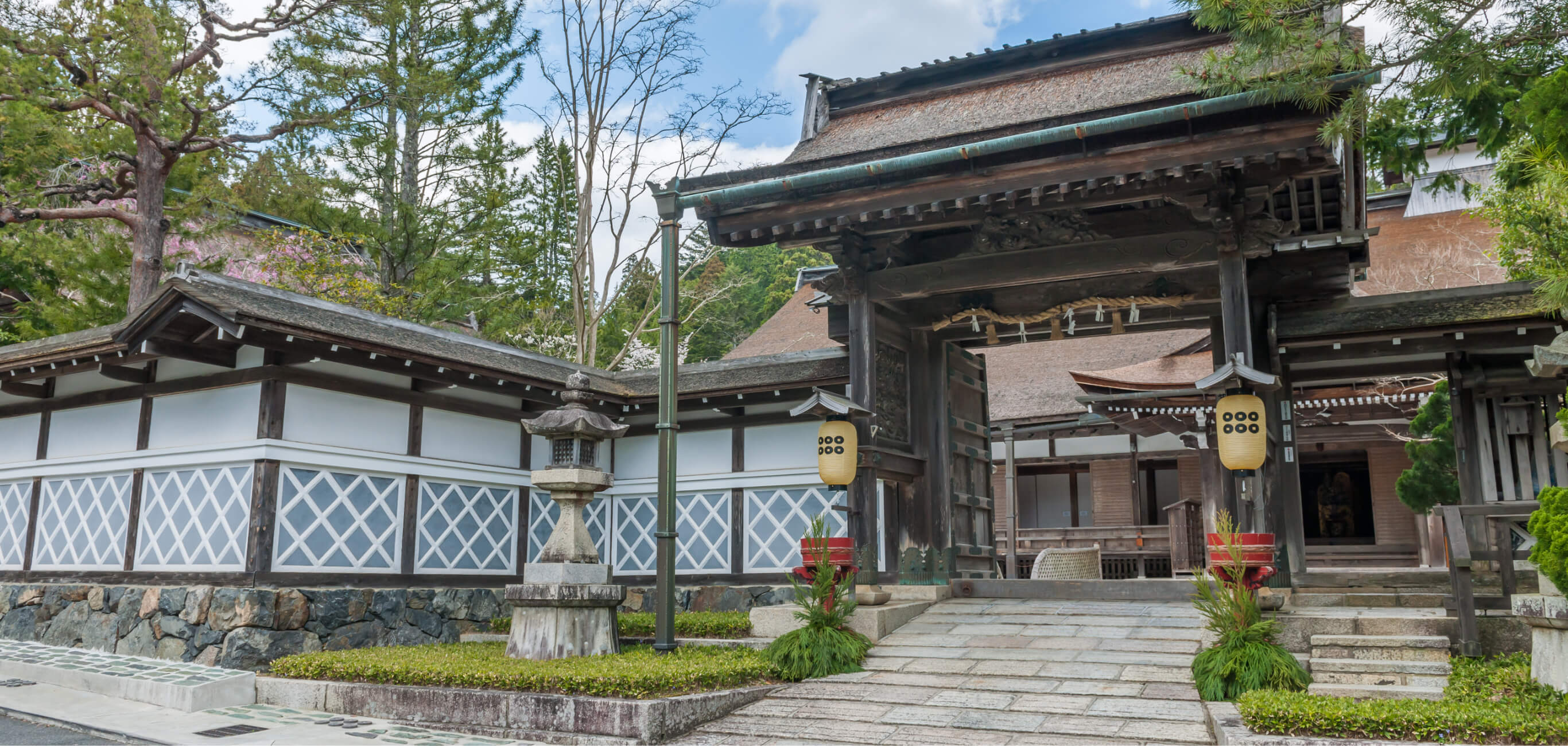
Isshin-in Valley as Seen From Rengejo-in
Koyasan is composed of the Danjo Garan and Okunoin temples, as well as the ten valleys known as the Koya Juttani (lit. Ten Valleys of Koya).
In addition to the temple that gives the valleys their name, Koya Juttani is home to a multitude of shi-in (small subsidiary temples affiliated with the main temple), as well as graves commemorating the senshi (masters who have passed away) and dan’otsu (followers who donated property).
Each valley was organized like a town, with common facilities for worship, bathing, and other functions, as the monks in each valley organized rituals and festivals together.
Located in the northwestern part of Koyasan, Isshin-in Valley is one of the Koya Juttani.
Isshin-in Valley is named after Isshin-in Temple, which was founded in the valley by Gyosho Shonin, a priest who had undergone rigorous ascetic training in Yoshino's Sho-no-Iwaya Cave and was well-versed in both Buddhism and Shinto. Located in the present-day village of Kamikitayama in Nara Prefecture, Sho-no-Iwaya Cave is a sacred site for Buddhist ascetic training.
Records state that the third daughter of Emperor Toba Imperial Princess Akiko (Buddhist name Hachijo-in) and founder of the Kamakura shogunate Minamoto no Yoritomo underwent religious conversions at Isshin-in Temple.
The high priest Gyosho Shonin (1130-1217) was praised as an ikibotoke (a “living Buddha” present in our world) by chief advisor to the emperor Kujo Michiie. Gyosho Shonin settled in Koyasan by the time he was fifty-four and lived to the old age of eighty-eight years.
The anniversary of his death is on May 7. Incidentally, the death anniversary of Sanada Nobushige (Yukimura), who is discussed in subsequent sections, is also May 7.
Gyosho Shonin named his disciple Jogyo Shonin, the third son of Minamoto no Yoritomo, as his successor at Isshin-in Temple.
Jogyo Shonin (1186-1231) was a man of such great ability that he could have become shogun in the Kamakura shogunate, but he devoted his entire life to the teaching and ascetic practice of Buddhism. Perhaps as a result of this choice, he was the only one of Yoritomo’s sons to live out his natural life.
Isshin-in Temple had closed down by the Edo Period (1603-1867), so the temple itself no longer remains in Isshin-in Valley. The main hall of Isshin-in Temple was rebuilt in the early 14th century and relocated to Danjo Garan, where it has been designated a National Treasure known as Fudodo Hall.
The famous National Treasure Hachi Dai Doji Ryuzo (standing statues of eight great youths) made by master sculptor Unkei is a group of eight Buddhist statues that were enshrined in Fudodo Hall.
Gyosho Shonin opened many subsidiary temples in this historic Isshin-in Valley. One of these was Okunobo (Buddhist designation Nenbutsuin). Its principal image was Amida Nyorai, and it would later become the Rengejo-in we know today.
It is said that Gyosho Shonin lived a life of nembutsu zammai, the practice of single-mindedly chanting the name of the Amida Buddha, at this subsidiary temple.
Rengejo-in is located in the northwestern part of Isshin-in Valley. It can be accessed from the Kyo-Osaka-michi route by taking the Fudozaka Trail up to Fudozaka-guchi (Kyo-guchi) and going down the Nyonindo Hall slope from there.
The Kyo-Osaka-michi route is one of the Koya Nanakuchi (seven pilgrimage routes to Koyasan). During the Edo Period, it was also the shortest route from Kyoto and Osaka to Koyasan.
According to the Kinokuni Meisho Zue published in 1838, it was the most commonly used highway in the Edo Period, with “eight or nine of every ten pilgrims taking this route to [Koyasan].”
After the great priest Kukai (known posthumously as Kobo-Daishi) entered into his eternal meditation (known as nyujo) in 835, the so-called “Nyujo Faith” gradually spread among the people.
Adherents to the Nyujo Faith believe that the spirit of Kobo Daishi remains in the mausoleum in the inner sanctuary of Koyasan, still clothed in living flesh and continuing to save people until the coming of Maitreya Bodhisattva to this world in 5 billion 670 million years.
Fudozaka-guchi (Kyo-guchi) can be found up the Nyonindo Hall slope, which is adjacent to Rengejo-in. There you can see the remains of a boundary that remained in place for more than 1,000 years, demarcating the area where women were forbidden to enter. The Isshin-in Valley ends here, and a women’s komorido (hall for prayer and ascetic practice) was built outside the boundary. This komorido later became a nyonindo, or women's hall, and is the only such women's hall remaining in existence in Koyasan.
Following the designation of Choishi-michi, one of the seven Koya pilgrimage routes, as part of the Sacred Sites and Pilgrimage Routes in the Kii Mountain Range World Cultural Heritage site in 2004, the mountain road from Irohazaka (formerly Fudozaka) to Nyonindo along the Kyo-Osaka-michi route was registered as a World Cultural Heritage site in October 2016.
About Rengejo-in
Koyasan was struck by catastrophe in 1521, as 4,000 temples were burned to the ground. Reconstruction began the following year, as Rengejo-in concluded an agreement with a powerful clan from Shinshu Province (present-day Nagano Prefecture) to provide shukubo, or lodging for pilgrims. It is a curious coincidence that it was at this time that Rengejo-in had contacts with the Unno clan, out of which the Sanada clan emerged.
Fought in September 1600 between the Eastern Army under Tokugawa Ieyasu and the Western Army that supported the Toyotomi clan, the decisive Battle of Sekigahara set the course of Japan’s history by opening the way for the establishment of the Tokugawa shogunate, which would remain in power for over 260 years.
The daimyo (feudal lord) of Shinano Province (present-day Nagano Prefecture) Sanada Masayuki and his second son Nobushige aligned themselves with the Western Army. Following their defeat, they were placed in confinement in Koyasan. It was at this time that father and son of the Sanada clan temporarily resided at Rengejo-in, which had served as a shukubo for the family for generations.
At the time, women were forbidden to enter Koyasan. The temple therefore prepared a residence for Masayuki and Nobushige in Kudoyama at the base of the mountain so that they would be able to bring their wives and children to live with them.
Nobushige ended up residing in Rengejo-in and Kudoyama for a combined total of 14 years. Upon entering the priesthood himself, he was given the priestly name Kohaku.
November 1614. The gears of history turned once again. When Toyotomi Hideyoshi, the warlord who first united Japan, died in 1598, his third son Hideyori succeeded him as head of the Toyotomi clan. Viewing Hideyori as a threat, Tokugawa Ieyasu ordered the young lord to surrender his seat of power at Osaka Castle. When the latter did not, Ieyasu placed the castle under siege in what came to be known as the Winter Campaign of Osaka. In a display of his loyalty toward the Toyotomi clan, Nobushige (Yukimura) escaped from his exile at Kudoyama, built the fortress Sanada Maru to the south of Osaka Castle, fought ferociously, and captured victory. However, having finally exhausted his strength in the Summer Campaign that followed, he was killed in battle.
The Sanada clan was spared from destruction by Nobushige’s older brother and clan head Nobuyuki, who had sided with the Tokugawa through the clever machinations of his late father Masayuki.
Nobuyuki (信幸) had inherited the character yuki (幸) from the name of his father Masayuki (昌幸). It has been said that, in order to avoid any doubts about his loyalty to the Tokugawa and ensure the continuation of the family line following the Battle of Sekigahara, he changed his name, replacing his father’s 幸 with the character 之, which carries the same reading of yuki. In Japanese, his name is thus rendered in two ways, 信幸 and 信之, both of which are pronounced Nobuyuki.
Rengejo-in renewed its agreement with Nobuyuki to function as a shukubo for the Sanada clan. Since then, the temple has been called Sanadabo, as the family temple of the Sanada clan in Koyasan. It has also been permitted to use the Sanada family crests called the Rokumonsen and Karigane as its temple crests.
The present-day main hall (hondo), kitchen (kuri), and main gate (sanmon) were reconstructed in 1860 with the support of the Sanada clan. Having survived a major fire in 1888, the temple retains the prestige of an Edo Period feudal lord’s temple.
